Max Somsin 1
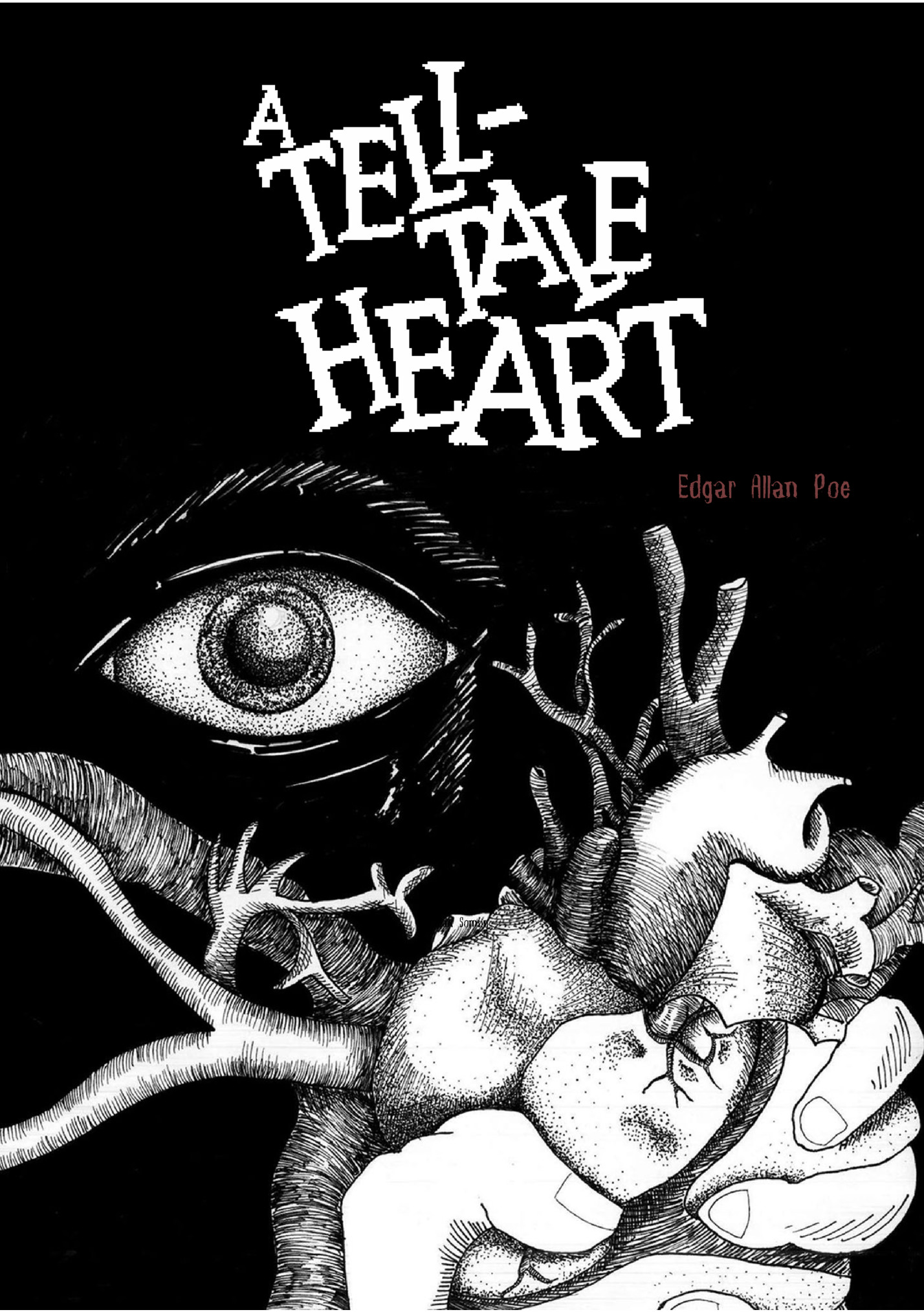
CAREER AND PERSONAL LIFE In 1826, Poe attended the University of Virginia for 11 months. However, his gambling losses at the university so incensed his guardian, John Allan, that he refused to let him continue. Poe returned to Richmond to find his sweetheart, (Sarah) Elmira Royster, engaged. In 1827, having enlisted in the United States Army under an assumed name, he published his first collection, Tamerlane and Other Poems. Poe and Allan reached a temporary rapprochement after the death of Allan's wife in 1829. Poe later failed as an officer cadet at West Point, declared a firm wish to be a poet and writer, and parted ways with Allan. LEGACY AND DEATH EARLY LIFE AND EDUCATION Edgar Allan Poe was born on January 19, 1809, in Boston, Massachusetts. He was the second child of actors David and Elizabeth "Eliza" Poe. Tragically, his father abandoned the family in 1810, and his mother passed away the following year. After these unfortunate events, Poe was taken in by John and Frances Allan of Richmond, Virginia. Although they never formally adopted him, he was with them well into his young adulthood. During this time, he was given a classical education, which was continued in Richmond. He also spent some time in Scotland and England from 1815 to 1820. Poe switched his focus to prose and spent the next several years working for literary journals and periodicals. His work forced him to move between several cities, including Baltimore, Philadelphia, and New York City. In 1836, he married his 13-year-old cousin, Virginia Clemm, but she died of tuberculosis in 1847. In January 1845, he published his poem "The Raven" to instant success. Poe is widely regarded as a central figure of Romanticism and Gothic fiction in the United States and of American literature. He is considered the inventor of the detective fiction genre, as well as a significant contributor to the emerging genre of science fiction. Poe died on October 7, 1849, in Baltimore, Maryland. His cause of death remains a mystery. 1
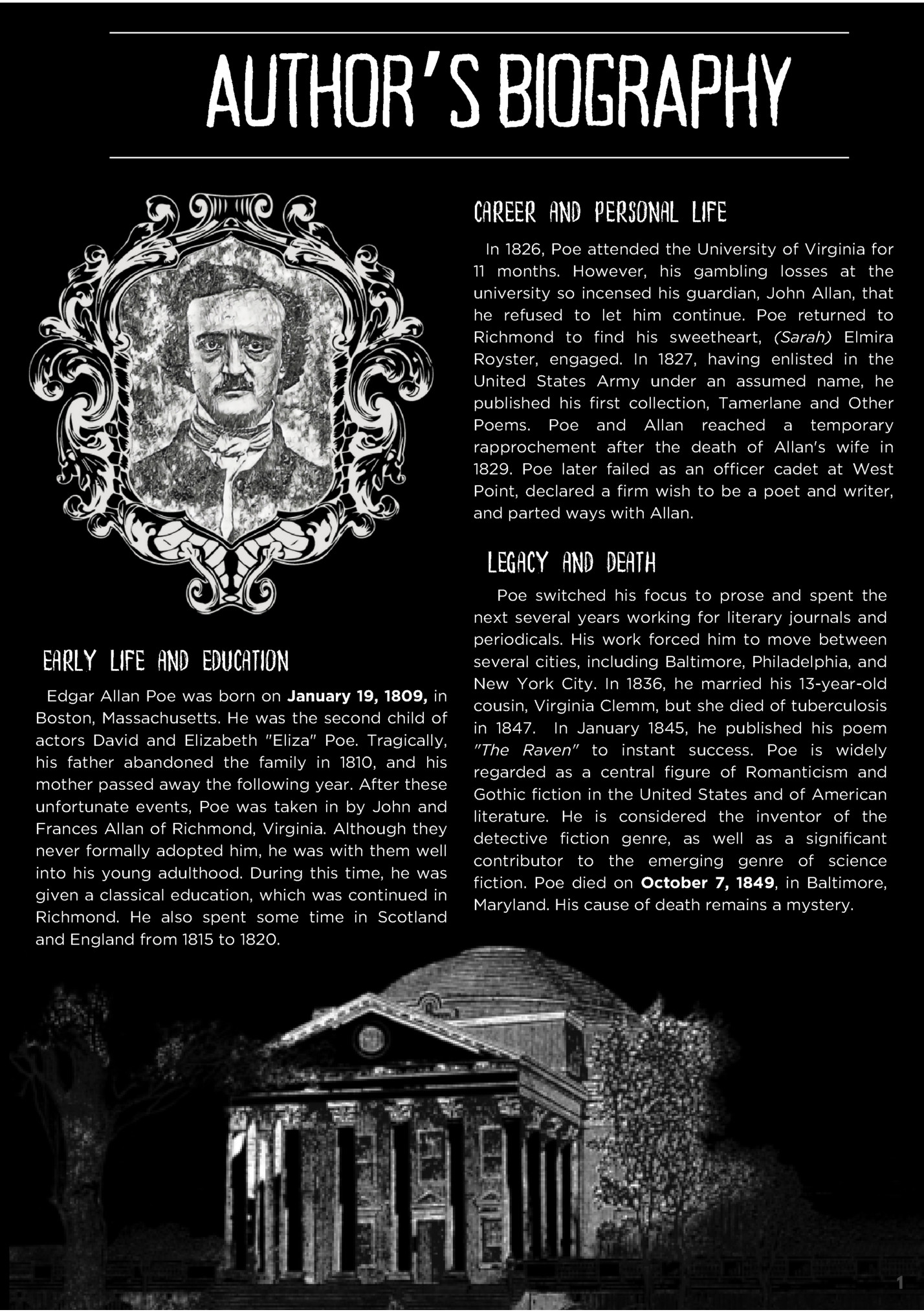
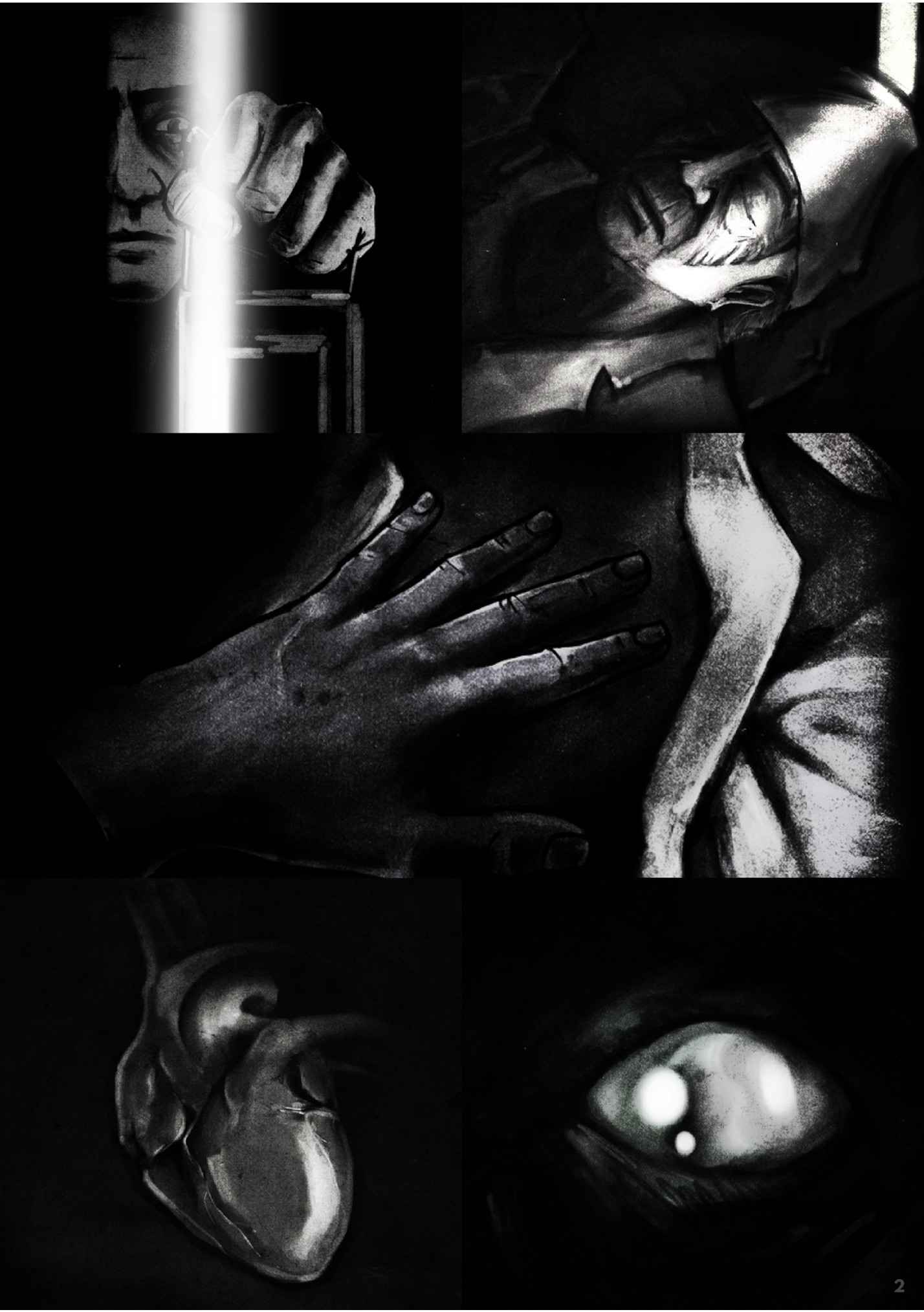
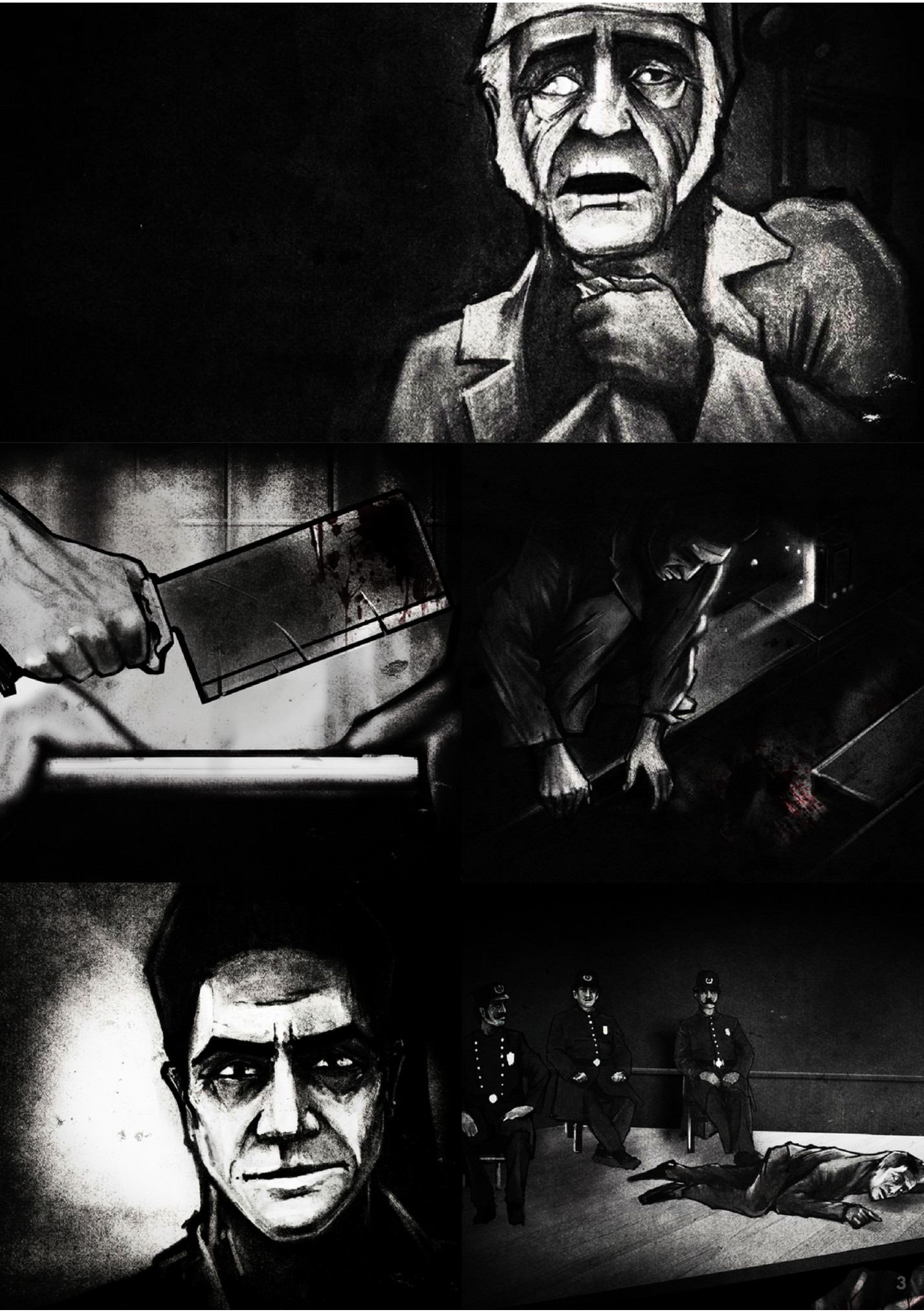
“The Tell-Tale Heart” is a mesmerizing short story written by the renowned author Edgar Allan Poe. Set in the 19th century, this tale belongs to the genre of gothic horror and psychological thriller, which Poe mastered like no other. The story was first published in 1843 and has since been a staple in American literature, illustrating Poe’s genius in capturing the dark aspects of human psyche and his ability to weave tension and suspense. PLOT SUMMARY Exposition — The story begins with the unnamed narrator insisting on their sanity despite the heinous act they are about to describe. They live with an old man whose vulture-like pale blue eye has tormented the narrator to the brink of madness. Rising Action — Driven by an irrational fear and hatred of the eye, the narrator meticulously plans and executes a scheme to murder the old man, ensuring that every detail is accounted for to avoid detection. For seven nights, they stealthily visit the old man’s room at midnight, but each time the eye is closed, preventing the crime. Climax — On the eighth night, the narrator’s presence awakens the old man, and the narrator finally sees the dreaded eye open. Overcome by fury and a sense of triumph, the narrator swiftly kills the old man, dismembers his body, and hides it beneath the floorboards of the room. Falling Action — The police arrive, alerted by a neighbor who heard the old man’s shriek. The narrator coolly entertains the officers, confident in the perfect execution of their crime. However, as the interrogation prolongs, the narrator becomes increasingly nervous. Resolution — Plagued by the hallucination of the old man’s heart still beating under the floorboards, the narrator’s guilt and paranoia crescendo. In a fit of hysteria, convinced that the officers must also hear the sound and are mocking their torment, the narrator confesses to the murder and begs them to tear up the floorboards. 4
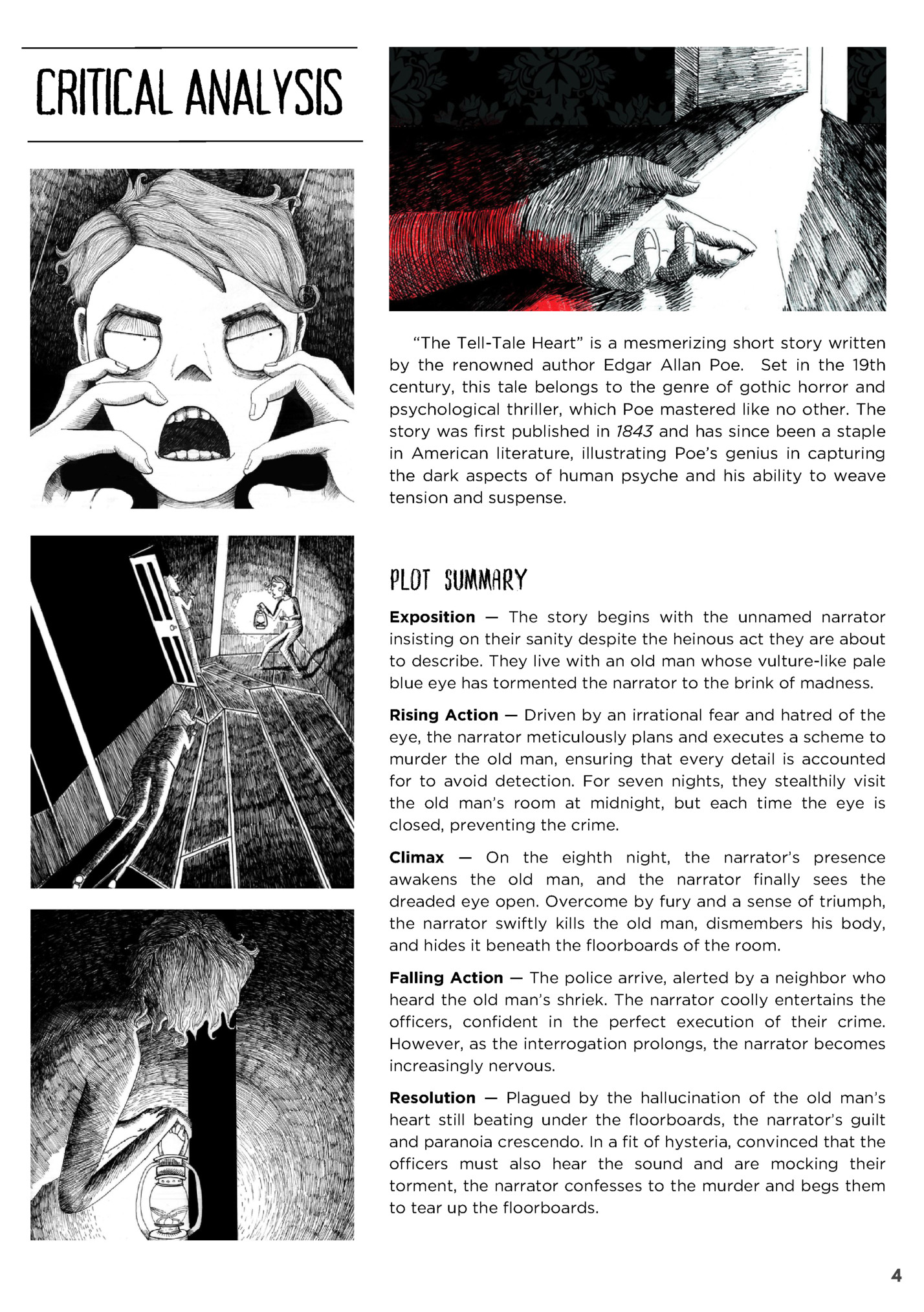
Narrator — The protagonist of the story is an unreliable narrator whose descent into madness drives the plot. Their obsession with the old man’s eye and subsequent murder showcases a complex mix of guilt, pride, and paranoia. The narrator insists on their sanity even while describing their meticulous planning of the murder, reflecting a deeply disturbed mind. Personality: Cunning, paranoid, and mentally unstable. Motivations: Obsession with the old man’s eye, which they perceive as evil or menacing, propelling them to commit murder. Character Development: The narrator transitions from cold, calculated planning to a state of frantic guilt and confession, revealing the depth of their madness. Old Man — The victim in the story, characterized primarily by the pale blue “vulture-like” eye that torments the narrator. He seems to live a quiet life and is unaware of the narrator’s growing hostility towards him. Personality: Largely inferred through the narrator’s perspective; seems to be trusting and unsuspecting. Motivations: Not explicitly detailed due to his role as the victim and limited presence in the narrative. Character Development: As a character, he is more of a catalyst for the narrator’s actions than a fully developed individual in the story. THEMES AND SYMBOLS Madness — The primary theme is the narrator’s descent into madness. Poe meticulously portrays the narrator’s psychological unraveling, emphasizing how guilt and obsession can distort one’s perception of reality and lead to insanity. Guilt — Closely tied to the madness is the theme of guilt. The narrator’s overwhelming guilt for the murder manifests as the sound of the old man’s beating heart, which ultimately drives them to confess the crime. The Evil Eye — The old man’s eye is a potent symbol in the story. It represents the narrator’s irrational focus of fear and loathing, prompting the murder. The eye, described as “vulture-like,” symbolizes death and decay, central to the gothic horror genre. The Heart — The beating heart symbolizes the narrator’s own conscience and guilt. The incessant beating that the narrator hears is a psychological manifestation of their guilt and moral breakdown, leading to their confession. The Watch — The narrator uses a watch to time their nightly visits to the old man’s room, symbolizing the meticulous planning and premeditation of the murder. It also represents the passage of time and the narrator’s growing obsession with the old man’s death. These themes and symbols intertwine to create a story that probes deep into the human psyche, exploring the boundaries between sanity and madness, and the heavy burden of guilt. 5
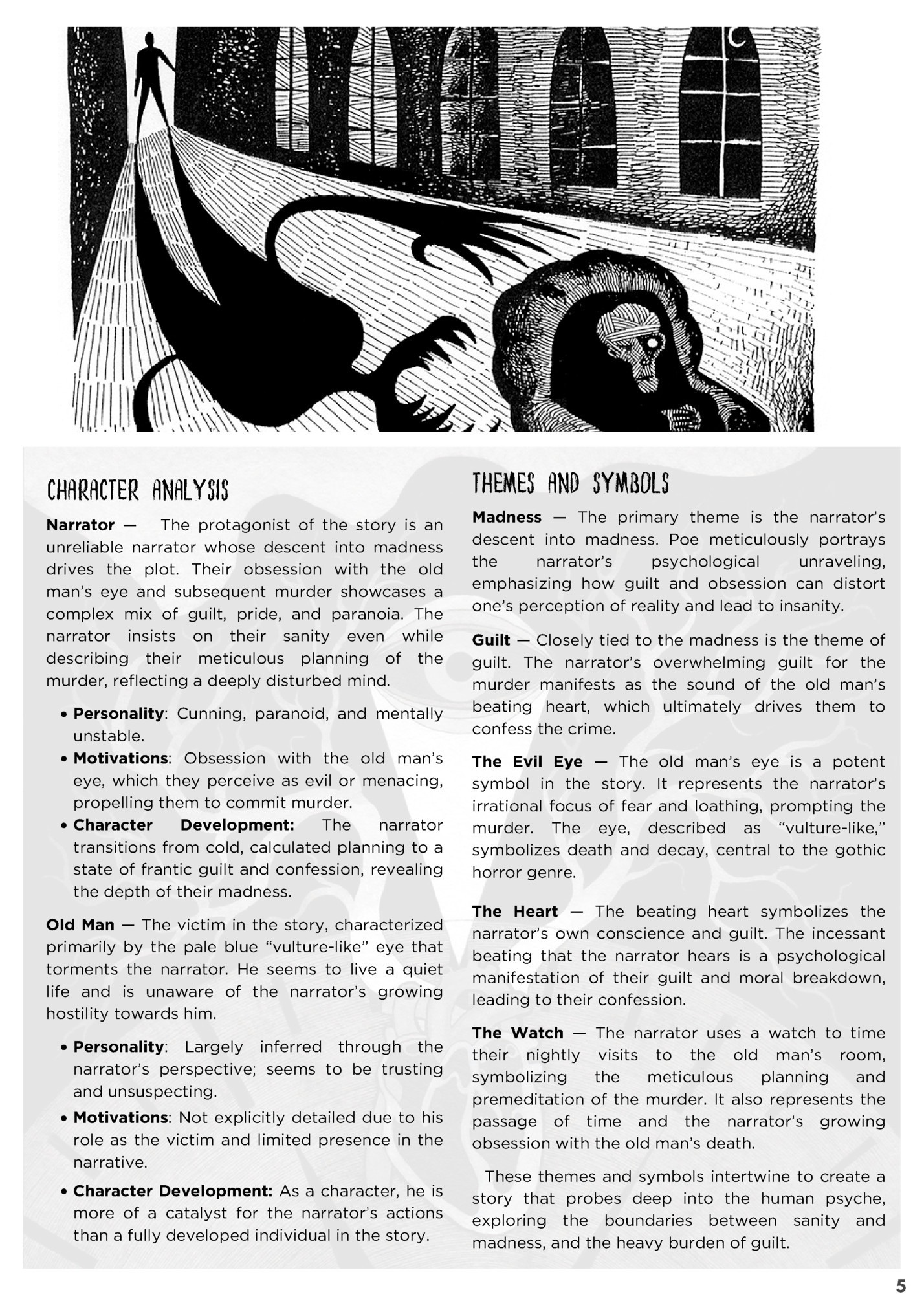
LITERARY DEVICES Gothic style: Poe employs a gothic writing style, characterized by elements of horror, death, and the macabre. This style is essential in creating the story’s tense and foreboding atmosphere, immersing readers in the narrator’s dark world. First-person narrative: The story is told from the first-person perspective, which provides intimate insight into the narrator’s troubled mind. This perspective helps to build suspense and allows the reader to experience the narrator’s growing paranoia and guilt firsthand. Tone of sanity vs. insanity: Poe masterfully balances a tone that swings between claims of sanity and evidence of madness. The narrator’s insistence on their own rationality, contrasted with their clearly irrational actions, creates a disturbing dissonance that pervades the story. Concise and intense prose: Poe’s prose is precise and intense, with a focus on the psychological state of the narrator. Every word seems carefully chosen to heighten the sense of tension and unease, driving the narrative forward at a compelling pace. Repetition and rhythm: The use of repetition and rhythmic language reflects the narrator’s obsessive nature and the story’s escalating tension. Phrases like the heartbeat, described as a sound “such as a watch makes when enveloped in cotton,” contribute to the building sense of dread. Point of View — The story is told from the first-person perspective of the narrator, providing a deep insight into their disturbed mind and creating a sense of immediacy and intimacy. Symbolism — Symbols like the old man’s vulture-like eye and the beating heart are central to the thematic development, representing insanity and guilt, respectively. Irony — There’s a stark contrast between the narrator’s claim of sanity and their clearly insane actions, creating a powerful situational irony. Repetition — Poe uses repetition to build suspense and emphasize the narrator’s obsession, such as the recurring mention of the beating heart. Imagery — Vivid imagery is used to create a tense, ominous atmosphere, and to intensify the psychological horror, particularly in the descriptions of the eye and the heart. Foreshadowing — Early mentions of the narrator’s sensitivity to sound and the old man’s eye foreshadow the story’s climax and the narrator’s unraveling. Personification — Inanimate objects, like the heart, are given lifelike qualities, enhancing the story’s eerie mood and the narrator’s descent into madness. Simile — Comparisons, like the eye being like that of a vulture, are used to evoke vivid associations and to heighten the sense of dread. Metaphor — The story employs metaphors, such as the heart representing the narrator’s own guilt and inner turmoil. Alliteration — The use of alliteration, like in the phrase “stealthy steps,” adds to the rhythmic quality of the prose and the building tension. 6
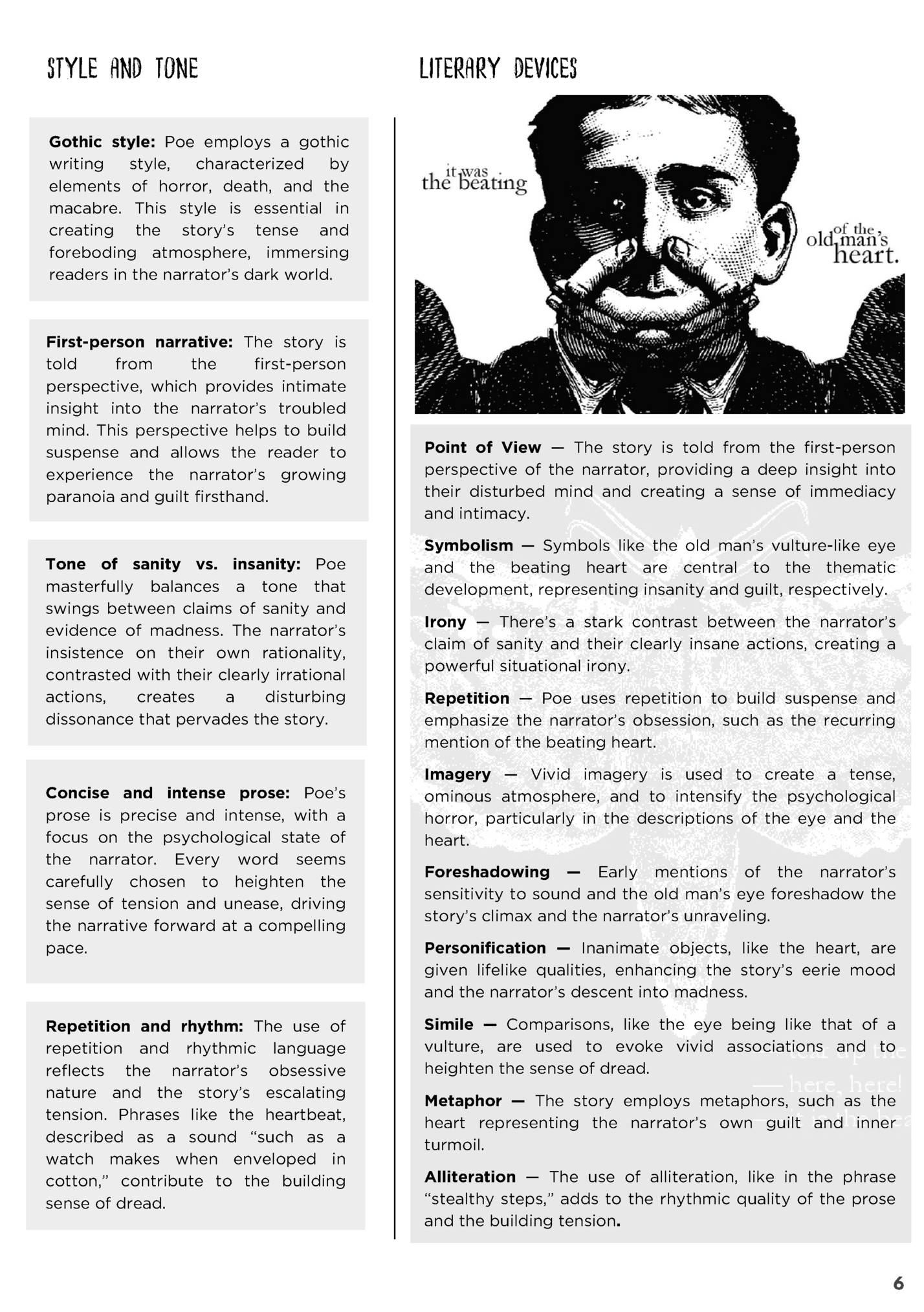
ISCUSSION QUESTIONS Why does the narrator want to kill the old man? Why does the narrator shine a light on the old man’s eye every night? How does the narrator support his claim that he is not mad? What is the sound that the narrator hears? Why don’t the police react when the narrator starts pacing and ranting? 7

works 8

Fleepit Digital © 2021